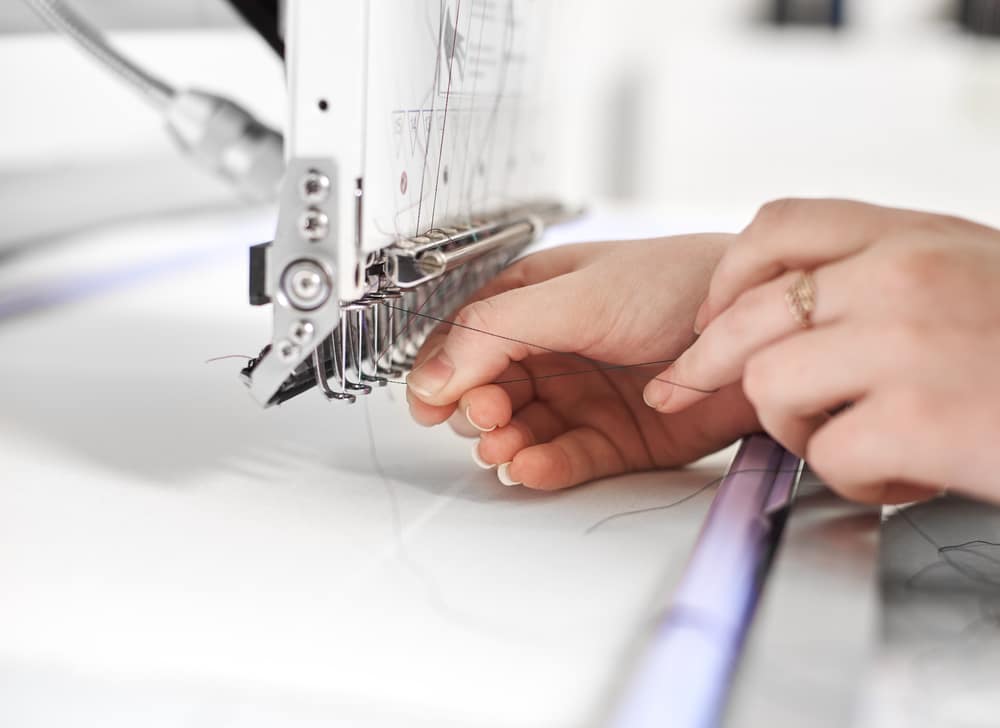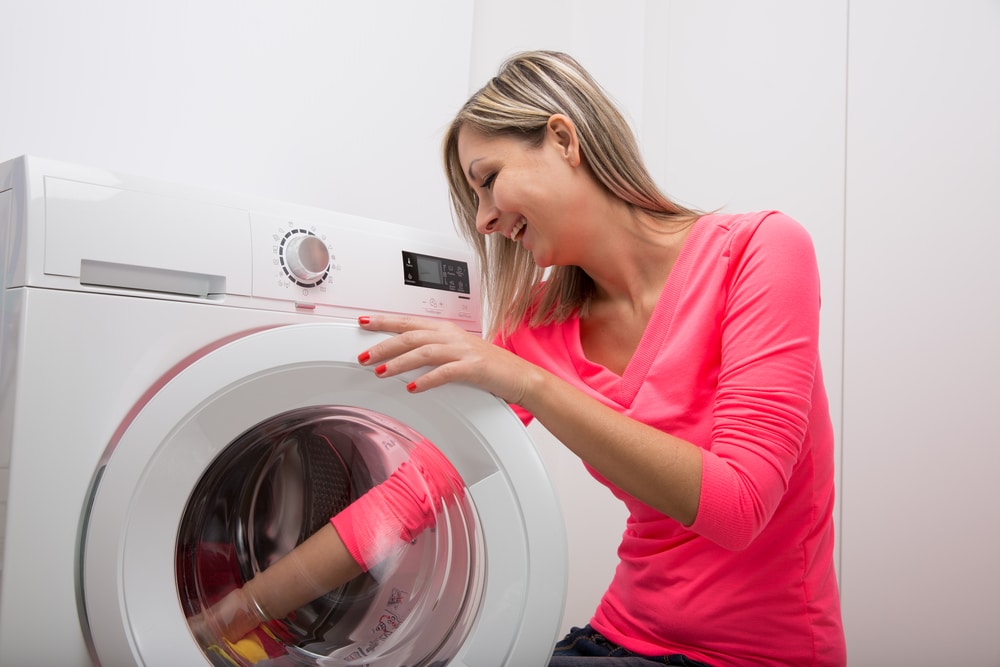Last Updated on
Most of us have a washing machine in our homes. Or, at the very least, we need to use one at the laundromat. With all of the latest advances in washing machine technology, it isn’t always straightforward to understand what the settings mean and how to use them to the best of your ability. That’s why we wrote this article to help teach you how to use a washing machine and achieve great results.
Different Types of Washing Machines
There are two main types of washing machines available, front-loading and top loading. Top-loading washing machines are the most common and have been around for a long time.
Front loader washing machines are newer and are becoming more and more preferred in homes as they upgrade to a new machine because they use less energy and less water to wash dirty clothes.
How to Use a Washing Machine: Step-by-Step Guide
Step 1: Read the User Manual
If you are using a new washing machine for the first time, we recommend reading through the user manual. The manual will help you better understand the settings and controls specific to your machine. It will also help you become acquainted with any special functions and parts.
Step 2: Gather Your Supplies
Before you initiate the process of washing your clothes, we recommend gathering your supplies. If you already keep all of your laundry supplies near your washing machine, take a mental inventory and determine if you have everything you need to do your laundry.
What You’ll Need:
- Laundry detergent
- Fabric softener or conditioner (optional)
- Stain treatment (optional)
- Mesh bag for delicates (optional)
- Basket for your laundry
- And, of course, your laundry

Step 3: Separate Your Laundry
The first thing you want to do when using a washing machine for laundry is to separate your clothes into different loads. Dividing your clothes can help preserve the integrity of the material and the colour consistency as well.
You can split your laundry by colour, weight, or material. We recommend separating a load for dark-coloured clothes, a load for light-coloured clothes, a load for delicates, and a load for heavier fabrics like jeans or towels. If you do not have enough delicate items to make a small load, you may want to try putting these garments in a small mesh bag to keep them protected during the washing cycle.
Step 4: Choose the Cycle Settings
After your laundry is separated and ready to go, it is time to choose the settings on your washing machine which will provide you with the best results for the type of fabric you are washing.
You will need to select either a regular, permanent press or delicate wash cycle with most washing machines. Also, choose the water temperature, which usually is usually cold, warm, or hot. Depending on your specific washing machine, you may also have the option to select more specialised settings like the load size, the soil level of the clothes you are washing, and the speed of the spin cycle.
If you are unsure what setting to choose, check the fabric care label on the garment. It may also include a brief description explaining the type of cycle required.
Step 5: Add Laundry Detergent
Next, you will add laundry detergent and other fabric softeners to your washing machine. With top-loader washing machines, you will add the laundry detergent to the drum and wait to add the softener.
With a front loader washing machine, a pull-out detergent drawer will contain the soap, usually located near the top of the drum on the outside. The detergent drawer will have smaller compartments labelled for the softener, detergent, and possibly prewash detergent for enhanced stain removal.
Make sure you do not add too much detergent, especially with small loads, because it makes it harder to rinse out thoroughly and does not make your clothes cleaner.
Step 6: Load Your Laundry Into the Machine

Once your machine settings have been chosen, load your clothes into the drum of your washer. Take care to add clothes loosely without packing them in or down inside the drum. If you find you are trying to stuff the clothes in, we recommend doing two smaller loads instead of forcing one larger one. It will result in cleaner clothes at the end as well as fewer wrinkles.
Step 7: Close the Door and Press Start
Now it is time to close the door on your washer, press start, and wait for it to run through the wash, rinse, and spin cycles. If you are using a machine that loads in the front, make sure you hear the door click shut; else, it will not start.
If you are using a top-loading machine, you will want to monitor the cycles as they progress so you can add the softener during the rinse cycle. With a front loader, this step is automatic.
Step 8: Unload Your Laundry
The final step is to unload your laundry from the machine’s drum. Most washing machines make a beeping sound to alert you when the washing cycle is complete. When you hear the beep, remove your garments and transfer them to the dryer or hang them to dry.
Washing Machine Cycle Settings Explained
The care label on your clothes should alert you to the best type of washing cycle, but here is an overview of the main setting options, so you won’t have to check every time.
Normal
The normal cycle has a fast tumble speed and a fast spin speed. This cycle is great for sturdy materials like cotton, denim, linen, and towels. It is also good at cleaning dirty or sweaty clothes. It will most likely be the most used wash cycle on your machine.
Permanent Press
The permanent press cycle tumbles fast but spins at a slower speed to prevent wrinkles. This cycle is good for synthetic fabrics like polyester, knits, rayon, or any other material that tends to pill.
Delicate
The delicate cycle tumbles and spins slowly to save the fibres in your clothes. It is good for delicate fabrics like silk, lace, and anything with sequins. The label will always say if an item should be washed using the delicate cycle.
Other Special Cycles
Some newer machines will also have special wash cycles like a rapid cycle, sanitise cycle, or a small load cycle. For information on these methods, refer to the manual.
Washing Machine Tips
Here are a few bonus tips to help you along the way.
- Don’t fill the machine to the brim, and your washing machine will perform better.
- After you use and clean a front-loading washing machine, leave the door cracked to dry on the inside thoroughly.
- Remove things from the pockets of your clothes before washing them.
- Removing clothes promptly when the cycle finishes may help prevent mildew and wrinkles.
- Don’t put fabric conditioner or softener directly on your clothes, or it could damage the fibres and leave a stain.
- Close any zips to prevent snags.
- Turn clothes with a pattern inside out.
- Pretreat stains with a concentrated detergent.
Time to Get Started
After reading through our washing machine instructions and tips, you should now know all about how to use a washing machine and be ready to get your laundry started. Just remember to check the care labels, separate the garments into smaller loads based on colour and material, and don’t use too much detergent, and you should do great.
Do you prefer using a front loader or a top loader? Let us know what you think in the comments below.
Emily is a woman of many talents. She has a B.A. in English and enjoys writing. Emily loves accessorising her home with quality products that not only serve a purpose but also enhance the overall convenience and tranquillity of her living space; there’s nothing like coming home to your own personal sanctuary after a long day! She loves anything that can make life easier or more comfortable—from dishware to furniture to lighting fixtures.



